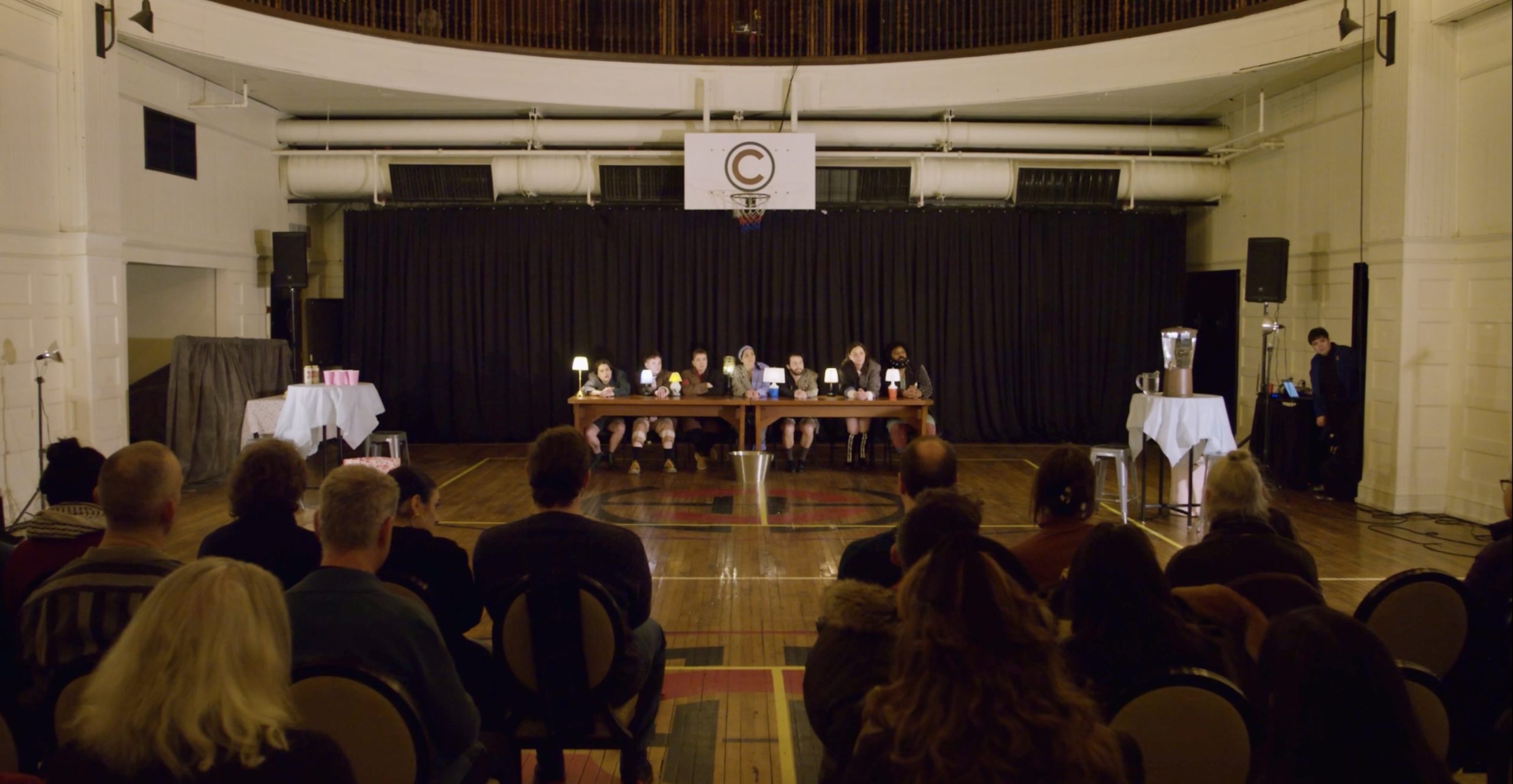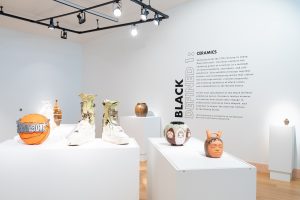Early February in Chicago is brutal. Although the Solstice has passed it is still dark most of the time. To boot, this year brought a ferocious cold that hardened the landscape. It can be a slog to check the mail, let alone make my way across the city to see performance art. And yet, on the sixth Monday night of this year, I joined about 40 other bundled up and rose-cheeked folx in Stagg Court at the Chicago Athletic Association located in Downtown Chicago. It’s an old member’s gymnasium turned event venue that still has basketball hoops mounted to the poles and an elevated running track that currently houses large light poles and stacks of chairs. I produce performance art in Chicago, and was invited by Lindsey Barlag Thornton, a friend and peer. I saw this piece in 2023 at Color Club in Irving Park, and was looking forward to seeing the work again.
As I arrive, take my program and find a seat, the performers dawdle around me. They say hello to audience members they know, tidying or arranging items on a long wooden table positioned along the back wall. Performers are distinguished from audience-members by a slightly uncanny wardrobe that creates heightened versions of them. For example, one performer has filled their beard with tiny butterfly clips, a few wear suits that have been deconstructed, and re-assembled with one long seam down the meridian of the body. Ensemble member Carol Crosby designed, made, and collected each item in the wardrobe, creating an aesthetic that lives just beyond the pedestrian world of the audience.
There is no stage platform, instead a clear ‘playing space’ is delineated on the gymnasium floor by the orientation of the chairs. There are 5 rows of cushioned chairs in the middle of the room, facing the west wall. I sit down, the high ceiling is above my head, and more than half of the empty gymnasium behind me. Eventually, everyone sits down—audience and performers—and we wait. Audience members sniffle and fidget. A performer blows their nose, then at one point they all lean and look at a door just over the right shoulder of the audience. No one ever enters. We stare at each other from across the liminal space.
I find it charming and confusing. Performance theorist Richard Schechner defined the form of performance art as “any piece of behavior, doing, or action that is in some way marked off or framed.” We all have permission to stare. People-watching that is relieved of intrusion. There is a paradox at play already. While there is generosity in this way of beginning, bringing us slowly into a new world, it is a very uncomfortable world where the feeling of not-knowing will be forefronted. A person we don’t know yet, but will soon learn is Holly Gabelmann—the magical interlocutor of the evening—plops the microphone in its stand onto the hardwood floor. We’ve begun.
Director and performer Lindsey Barlag Thornton addresses us directly, offering a welcome and saying “I’ve arrived at an age where—I’ve given toasts and speeches at weddings and memorial services.” I think of Bertold Brecht, the mid-century German theater practitioner who believed theater could truly change the world just by breaking down the wall between audience and actor. Lindsey is reciting a prose poem more or less on the meaning of life and fear of losing someone you love, but delivered as if you are in the middle of a great conversation with a smart, articulate friend at a party. She tells us of her sentimental father who cries easily and with the same teary-eyed sentimentality, she makes a toast “here’s to remembering it all.”
Over the next fifteen minutes, one by one, we hear from everyone sitting at the table, they tell us snippets from their lives. Milestone moments, first crush, first heartbreak. Each one more nuanced than the one before. We see and hear the experience of growing into ourselves, of the sadness and joy in parenting, of finding community, the necessary evolution of seeing elders in our communities as whole and flawed humans. The delightful and hyper-personal markers of time passing. This goes on for some time. We are being invited into a work which is about the relational quality of time, the work of listening, and the performance of holding space for stories. I find deep resonance when performer Jordan Harris reflects on feelings of loneliness and the miraculous joy of ‘looking up one day and being surrounded by community.’ That happened to me too, very recently.
This is a type of abstract co-devised theater that is very Chicago. No longer working from a script written by an external artist that has been interpreted by a director, and presented to tell a linear narrative. We are witnessing the culmination of a process where each performers ‘script’ is derived mostly from their own lived experiences. Their stories are framed together, sculpted, and integrated into a whole that is more than the sum of its parts. Choreography and writing are developed together through group play, individual tasks, and conceptual direction in rehearsal. In this process, the collaboration of the ensemble is creative material, led by the question: How can we make together?
I spoke with co-directors Lindsey Barlag Thornton and Amanda Dunne Acevedo, also known as Genesis, in January, just as they were beginning the process of remounting there are no dead people. In their creative process, material is generated through workshops designed specifically for the artists in the room. Lindsey said, “We strive for [creating] that feeling of ‘no one’s ever playing a character.’ They’re always themselves. And so, [they’re] just trying to be really present in the moment—that is in the moment—that is that performance.”
“The work comes from such personal places, right? And we want the people in the room to bring different entryways or lenses. Whether it’s, you know, we’re starting talking about our childhood, or whether we’re talking about death in our life. For us … the community and the process—the atmosphere we create in the room through the devising process—we feel is just as important as whatever the final product is.”

I’m thinking about all of this when the small but mighty performer, Carol Crosby takes the mic and their ‘first’ milestone slowly devolves into a full-on rant about the weight of the mundane pressures in life. The loss of perspective, of self, and the yearning to reconnect with some sense of being alive. They turn to Holly, exhausted. With a tap on their phone, our intrepid stage manager cues a recording of Frank Sinatra’s My Way for a live audience. Everyone on stage comes together and in a unified slow motion something dance-like starts to happen, relieving the tension. Performers start to run in place, and a few take off like a shot and run around the huge gym, behind us. I don’t turn around but I hear their feet on the hardwood running to the far wall and back again. Falling one by one to the ground panting, the song ends and the sound of canned applause fills the room. Lauren Steinberg is still running in place; gasping for air. Alex Hovi pours water for the group and they drink. Lauren holds a cup of water up as if to make a toast; still running in place. I recognize this as a relationship to material in performance art. Where a painter uses color and hue, a performance-maker explores body and fatigue. It’s a little uncomfortable to watch, but to feel alive we must remember we are in a body. Lindsey has stepped in, whispering a toast in Lauren’s ear as they continue to run in place, still holding the cup above their head “Here’s to saying enough.” Lindsey whispers and Lauren repeats it, louder, while Alex attempts to fill the cup with water which is spilling everywhere, including down Lauren’s face.
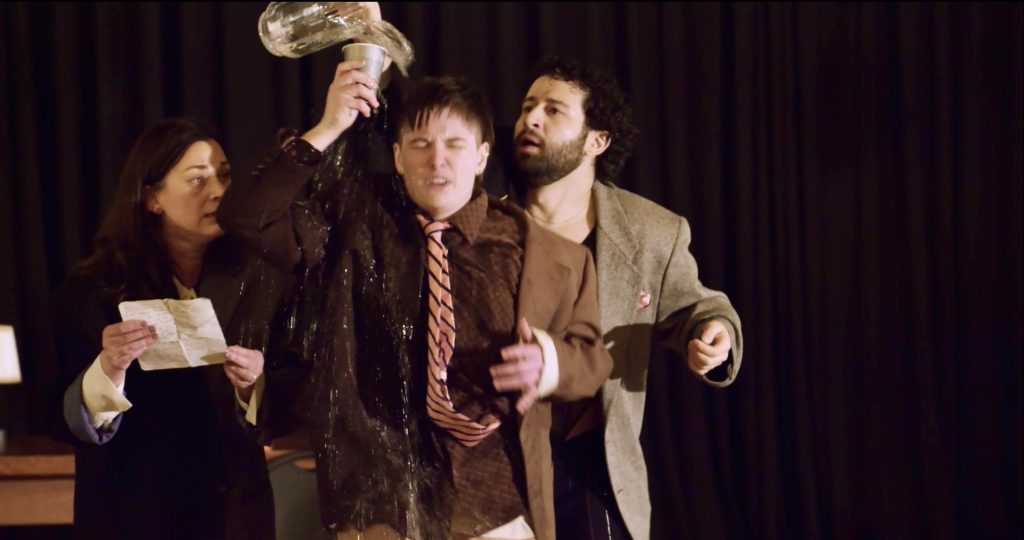
From left to right: Lindsey Barlag Thornton, Lauren Steinberg, Alex Hovi. Image courtesy of the artists, Lindsey Barlag Thornton and Amanda Dunne Acevedo.
It continues for some time:
“Here’s to saying enough
To saying no
To taking a breather
To leaving the room
To giving ourselves a moment
Here’s to dancing, jumping, shaking it out
To screaming and ugly crying
To crying in the bathroom stall, on public transit, in church, at the movies, during the family holiday party, in bed tucked in up to your nose and muffled into a pillow
To slammed and thrown and broken things
Here’s to not answering all the text messages and voicemails
Here’s to reading the cards over and over again
Here’s to telling yourself what you need to be told
Here’s to therapy
Here’s to singing their song on repeat
Here’s to telling the same story over and over again
To eating their favorite treats at the food court
To visiting their grave, to spitting on their grave
To the photos you choose to share and keep for yourself
Here’s to indulging in all the chocolate and wine and cigarettes you need to
To not denying yourself a little pleasure amongst a sea of denial
To sex because right now you need to feel as close as possible to someone
Here’s to shutting off your mind
Here’s to allowing yourself to be held by another
To the power of a story so radically different than yours
Here’s to sitting in it, digging in deep and feeling all of the loss all the pain
And to accepting the beautiful things that come to you after
Here’s to not forgetting all their imperfections
And to searching for them in wild ways even after they are gone
Here’s to faith and quiet moments of repair.”
What we’re hearing is one of several collectively written texts for the piece, this one a prose poem playing on the structure of a toast. Lindsey said, “Lauren’s toast was collective; same with Alex’s eulogy list of names he reads; and Grace’s toast at the end (that one’s a lot of Grace, but also some other’s voices). In the 2023 [devising] process the ensemble all had notebooks; we would do a lot of writing based on prompts and so those three text pieces came from selecting and editing various ensemble members’ text together.”
Lauren stops, panting. It brings a deeply familiar sense of fatigue, physical, spiritual, existential. I feel permission to recognize this weight, to feel it. The group begins to mop up the water with bath towels. Lindsey removes Lauren’s shoes, puts on dry socks, and dries their face. We watch this tender moment of care. Something they have rehearsed and performed many times, I read in the exchange that these performers are very good friends. Watching this brings tears to my eyes. Rage and acceptance again in paradox, uncomfortable and cathartic. Inherent in the community we’re witnessing onstage is a reference to direct action organizing, to the shared labors of change-making and chosen family. I recognize performers and audience members from their artistic practice and activism. We are invited to restore together as witnesses and members of this ecosystem.
The lights have gone out, there are ghosts among us. Performers stand under bed sheets and lay on the ground. Or are they corpses? A whispering starts, builds in volume and fades with Jordan whispering alone. What unfolds is a beautiful solo performance by Jordan of Skeeter Davis’ The End of the World.
Why do the birds go on singing?
Why do the stars glow above?
Don’t they know it’s the end of the world?
It ended when I lost your love
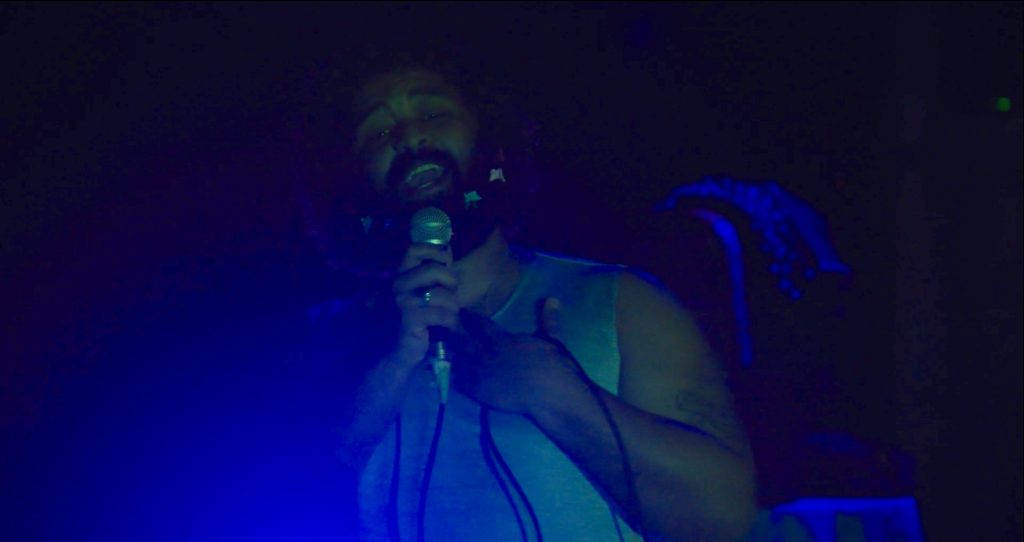
We’ve arrived at the dark night of the soul together, in a space to safely contemplate life’s most terrifying eventuality: death. The ghosts are back, lights flicker, and lamps appear. In comes a new choreography and text about remembrance and all the ways the dead appear in our lives. Alex says “We will remember you for the life you lived. We will remember you even if we never knew you.” With a subtle shift in language, Alex begins a tribute to family and friends lost, the co-written, collective eulogy. “And my cousin Linda, who raised three amazing children, and was a certified badass.” It’s a long list, and I think about my community through this lens, my heart swells. An audience member one row ahead and a few seats over sniffles, a tear running down their cheek. The lights go out.

Amanda Dunne Acevedo rolls out to the center of the stage a huge, frosted, sheet cake. It’s colorful and ornately decorated, she starts to cut it on a grid, making smaller squares. While cutting the cake, she tells us about her young daughter—a COVID baby—and how much she loves for her parents to sing “Goodnight Sweetheart” to her every nap and bedtime. It’s become a family tradition. She starts passing out the cake to the audience members. I get a slice and take a bite. It’s very sweet, and good. She goes on to tell us of visiting her father in hospice care and singing to her dad in the days before he died. She sings the song to us, and about half-way through Amanda stops abruptly and smashes the cake in her hand. The cast, who has been watching alongside the audience, steps in. Things get cleaned up and tears dried.
…
A lot of things have changed in my life, since I saw there are no dead people two years ago. I took on the difficult privilege of being on a care team as a friend passed from cancer on hospice. I helped administer pain medication and bathe my 49 year-old friend, and did laundry for five days. The hospital sent a nurse and social worker each day. While waiting to talk to my friend’s partner and mother, the social worker and I would make small talk. She talked about how impossible it is to process death. She said she often witnesses that people can’t be in the room with it, and will use any distraction they can to avoid it. I remember being struck by the way she always referred to death as ‘it’ as if it were a corporeal being alongside the living.
What happens when we die? As a young person I always thought about this from an individual perspective—where do I go? What will happen to me? As I approach middle age, I’ve become less interested in that. I find myself thinking more about what will happen to those I love when I’m gone. Will they be ok? Will they feel my love for them from through the veil? These are questions of living, not of dying.
This is something that director Amanda Dunne Acevedo has more experience with than most. In our interview she tells me, “I had a period in my 20s where I experienced a lot of grief at once that I did not know what to do with it. I found out I was adopted. My grandfather who I was very close to, died, and then two years later my mother died, and this all happened within the span of, like, three and a half years. I don’t think I was using words like grief and that I’m grieving. I just felt very unmoored from my life. I felt like I was having a personality change—in a bad way. And I was not processing it with other people, well…because I didn’t really know how to do that. I was trying to keep up a certain appearance, even though I felt like I was also kind of failing at everything. So that experience with grief sort of set me slowly down a path of feeling very drawn to things that were addressing grief and more intentionally seeking them out as I got older. [I discovered] I could be working through it in a way that would feel like it was helping with some of the internal turmoil that I was going through. I would say I spent those few years just feeling constantly devastated.”
After becoming a mother to her daughter Lola alongside the death of her father, Amanda realized, “an opportunity to start this narrative differently with Lola from a young age. She’s only two and her Papa’s dying, and she knows him. We have to tell her he died and we can explain it [and teach her] it’s not a bad thing to bring him up and remember him.”

She says, “Lola, my daughter was really what was the impetus of the piece. [I sent Lindsey] this voice memo that was like, ‘If I die, I was thinking about all these things I’d want you to tell Lola about.’” And from there, the piece was born out of Lindsey and Amanda’s friendship. I think that is why watching there are no dead people feels like sitting with a dear friend and looking through a kaleidoscope. Sharing it back and forth and trying to articulate what you saw and the memories it evokes. What is modeled is a method for being in grief together. We’ve seen what happens to people who never process their grief. This group of friends is going to make sure that doesn’t happen to each other, and they are trying to show us the way.
Back in the performance, many of us are still eating cake, including the performers. And as day follows night, catharsis leads way to joy, gratitude. The performers offer toasts to small pleasures of life, the little good deeds.
Then Alex is at the mic, lip syncing the first lines of Miles Fisher’s cover of The Talking Heads, This Must Be the Place. The final dance number has begun. Choreography pulled from your last childhood sleepover mingles with your favorite wedding reception dance move, confetti is flown in the air. Glee abounds. Audience members laugh and clap with recognition. The kids are alright.
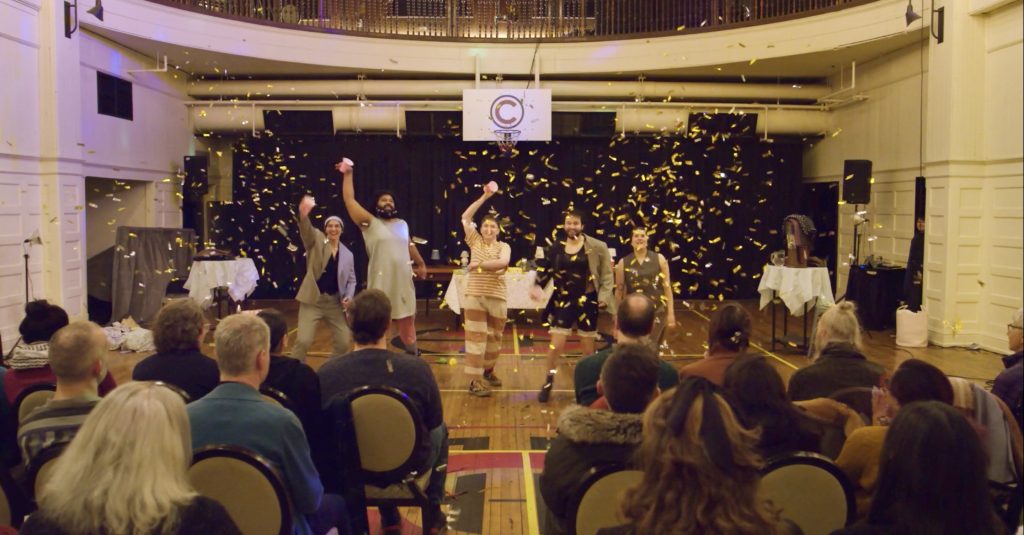
The song ends and suddenly Grace Needlman is in awe of the wonders of the universe and the natural world. In the final collective text, we arrive full circle through the tasks of remembering we’re in a body that will die, that we co-exist with so many wonderful beings, and that we have agency to help, to do the right thing, and to love.
The piece fades out with Alex alone on stage, slowly starting to clean up. Suddenly the silence is broken with a knock at that door everyone was staring at two hours ago. Alex returns with a care package of a small balloon, a few snacks, and a bottle of wine. Holly is there to help with music and lights. We slide out of the dream, back to reality, Alex tells us to please stick around for a drink, and feel free to hang out. The audience applauds, conversations begin, hugs all around.
This is a coming of age story, but more accurately a coming of middle-age story. If we’re lucky, we continue to grow, learn, and evolve long into adulthood. Change and its companion Loss, follow us all through life. We can befriend it by dancing with it, listening to stories, and noticing our life while we’re living it. One day you might just look up and realize the beauty in the darkness, the growth and rest it offers you. We must grieve; for grief is a portal to joy. Let your defiance be fueled by this source of joy, let it move you to make things together, build a stage around your community.
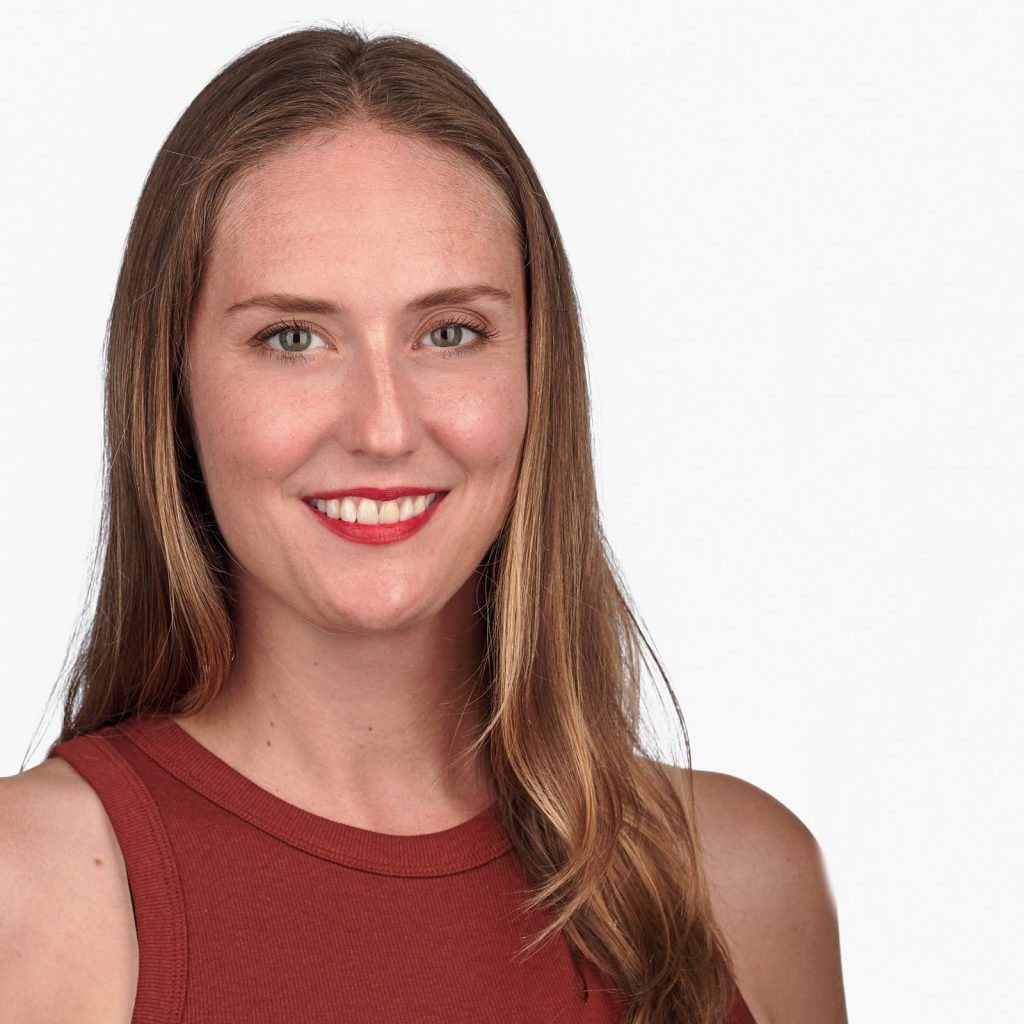
About the author: Originally from southern Missouri, Sarah Skaggs has been producing art and culture events, collaborating with artists, and engaging the structures of arts policy for nearly 20 years. Working in a range of contexts from small towns to big cities across the globe, she believes in building relationships and community as central tenants of her work. Chicago is her home, where she runs a small business managing artists and producing performances, and is a lecturer at the School of the Art Institute of Chicago.
